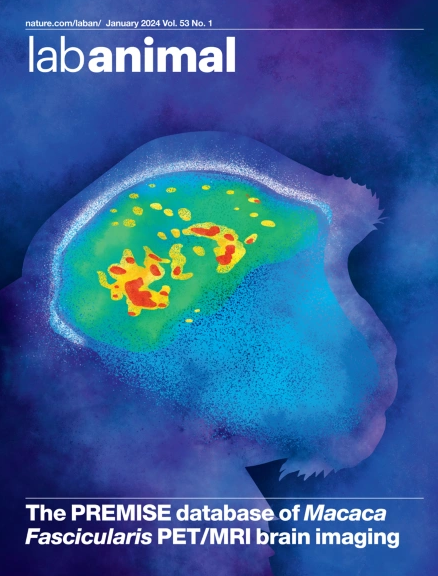Murine model of minimally invasive nasal depot (MIND) technique for central nervous system delivery of blood–brain barrier-impermeant therapeutics
IF 5.9
3区 农林科学
Q1 VETERINARY SCIENCES
引用次数: 0
Abstract
The blood–brain barrier (BBB) poses a substantial obstacle to the successful delivery of therapeutics to the central nervous system (CNS). The transnasal route has been extensively explored, but success rates have been modest due to challenges related to the precise anatomical placement of drugs, the small volumes that the olfactory cleft can accommodate and short drug residence times due to mucociliary clearance. Here, to address these issues, we have developed a surgical technique known as the minimally invasive nasal depot (MIND), which allows the accurate placement of depot drugs into the submucosal space of the olfactory epithelium of rats. This technique exploits the unique anatomy of the olfactory apparatus to enable transnasal delivery of drugs into the CNS, bypassing the BBB. In our rat model, a bony window is created in the animal snout to expose the submucosal space. Using the MIND technique, we have successfully delivered oligonucleotides to the CNS in Sprague-Dawley and Long-Evans rats, leading to an upregulation of brain-derived neurotrophic factor in the substantia nigra and hippocampus. In this Protocol, we describe the procedural steps for MIND. This procedure takes about 45 min and can be performed by researchers with basic surgical skills. We additionally describe modifications to perform MIND in mice, which are anatomically smaller. The MIND procedure represents a unique platform that can be used to overcome the limitations posed by the BBB. This technique can potentially expand the therapeutic toolkit in the treatment of neurological diseases. This Protocol describes a minimally invasive technique for central nervous system drug delivery in rodents. The procedure allows the use of the transnasal route to deliver blood–brain barrier-impermeant drugs.


用于中枢神经系统输送血脑屏障渗透疗法药物的微创鼻腔药库(MIND)小鼠模型
血脑屏障(BBB)是将治疗药物成功输送到中枢神经系统(CNS)的一大障碍。人们对经鼻途径进行了广泛探索,但成功率不高,原因在于药物的精确解剖位置、嗅裂所能容纳的体积小以及粘膜清除导致的药物停留时间短等挑战。为了解决这些问题,我们开发了一种称为微创鼻腔药库(MIND)的手术技术,可以将药库药物准确地放置到大鼠嗅上皮的粘膜下空间。这项技术利用嗅觉器官的独特解剖结构,绕过生物BB,经鼻将药物输送到中枢神经系统。在我们的大鼠模型中,我们在动物鼻腔开了一个骨窗,以暴露粘膜下空间。利用 MIND 技术,我们成功地将寡核苷酸输送到 Sprague-Dawley 大鼠和 Long-Evans 大鼠的中枢神经系统,导致黑质和海马中的脑源性神经营养因子上调。在本《规程》中,我们将介绍 MIND 的程序步骤。该过程耗时约 45 分钟,具备基本手术技能的研究人员即可完成。我们还介绍了在解剖学上更小的小鼠中进行 MIND 的修改。MIND 程序是一个独特的平台,可用于克服 BBB 带来的限制。这项技术有可能扩展治疗神经系统疾病的工具包。
本文章由计算机程序翻译,如有差异,请以英文原文为准。
求助全文
约1分钟内获得全文
求助全文
来源期刊

Lab Animal
农林科学-兽医学
CiteScore
0.60
自引率
2.90%
发文量
181
审稿时长
>36 weeks
期刊介绍:
LabAnimal is a Nature Research journal dedicated to in vivo science and technology that improves our basic understanding and use of model organisms of human health and disease. In addition to basic research, methods and technologies, LabAnimal also covers important news, business and regulatory matters that impact the development and application of model organisms for preclinical research.
LabAnimal's focus is on innovative in vivo methods, research and technology covering a wide range of model organisms. Our broad scope ensures that the work we publish reaches the widest possible audience. LabAnimal provides a rigorous and fair peer review of manuscripts, high standards for copyediting and production, and efficient publication.
 求助内容:
求助内容: 应助结果提醒方式:
应助结果提醒方式:


